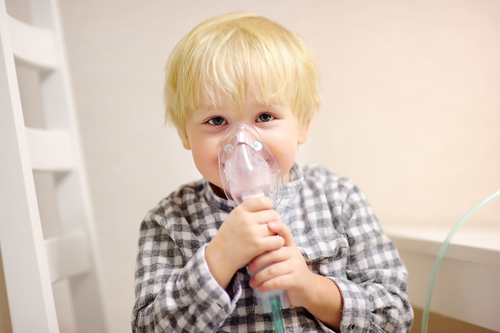Group Publishes New Guidelines on Home Oxygen Therapy for Kids with PH

The American Thoracic Society (ATS) has published new recommendations for home oxygen therapy to treat chronic hypoxemia (low oxygen levels in the blood) in children with chronic lung or pulmonary vascular diseases, including pulmonary hypertension (PH).
The guidelines were published in the American Journal of Respiratory and Critical Care Medicine, in an article titled “Home Oxygen Therapy for Children: An Official American Thoracic Society Clinical Practice Guideline.” The ATS panel consisted of 22 experts in pediatric and neonatal medicine, respiratory therapy, nursing and population health, as well as parents.
Chronic hypoxemia in children can lead to PH, poor sleep, stunted growth, and delays in cognitive and behavioral development.
Hypoxemia can be diagnosed by assessing oxygen saturation (SpO2) through the use of pulse oximetry. According to the guidelines, children younger than 1 are diagnosed with chronic hypoxemia if they have a SpO2 at or below 90 percent during five percent of the recording time, or in three independent measurements if recorded intermittently. Diagnosis of children of 1 and older requires a 93 percent or lower oxygen saturation.
Interested in PH research? Check out our forums and join the conversation!
The guidelines focus on the treatment of chronic hypoxemia through home oxygen therapy in children with diseases including PH with and without congenital heart disease, cystic fibrosis, bronchopulmonary dysplasia, interstitial lung disease, sickle cell disease, and sleep- disturbed breathing.
“Home oxygen is often needed for children with chronic lung and pulmonary vascular diseases,” Don Hayes Jr., MD, medical director of the Advanced Lung Disease Program at Nationwide Children’s Hospital in Columbus, Ohio, and co-chair of the working group organized by the ATS Assembly on Pediatrics, said in a press release.
“However, there is a striking lack of empirical evidence regarding its implementation, monitoring and discontinuation in children. These guidelines, developed by a panel of highly respected experts, offer an evidence-based approach to using home oxygen to benefit pediatric patients,” Hayes said.
The panel based the recommendations on existing studies and clinical practice guidelines, and rated the strength of the findings by using the four-level GRADE system (Grading of Recommendations, Assessment, Development, and Evaluation). The GRADE system classifies the quality of evidence, ranging from “very low” to “high.”
Because of the limited number of high-quality studies available, panel members relied on their own clinical experience. In these cases, the GRADE quality (or confidence) level was categorized as “very low.”
The recommendations for PH were different depending on the presence of congenital (present from birth) heart disease. GRADE evaluated both recommendations as strong, but with very low-quality evidence.
The ATS recommends that children with PH and chronic hypoxemia, but without congenital heart disease, receive home oxygen therapy. Children with PH and congenital heart disease complicated by chronic hypoxemia are not recommended home oxygen therapy until consulting with a pediatric pulmonologist or cardiologist with expertise in PH and oxygen supplementation.
The latter recommendation is based on the impact supplemental oxygen could have on patients’ hemodynamics (blood circulation) and physiology.
Apart from disease-specific recommendations, the panel also provided general guidelines applicable to children receiving oxygen therapy. These include proper access to age-appropriate equipment and supplies by insurers, long-term monitoring by pulse oximetry, regular follow-ups by healthcare providers, and medical examination before deciding to discontinue therapy.
According to the guidelines, discontinuation of home oxygen therapy can be achieved over the course of weeks or months by lowering oxygen flow or by limiting the therapy during certain times of the day. However, even after discontinuation, the guidelines recommend maintaining access to the therapy at home for several months, in case the child needs to restart it.
The team, however, emphasized that a larger prospective trial is needed to compare the various discontinuation strategies for home oxygen therapy.
Overall, “future research is needed to further advance our understanding of and ability to utilize home oxygen therapy in children,” Hayes said, adding that future studies “should address the relationship between oxygen saturation levels and growth and development as well as identifying best practices for weaning and discontinuing home oxygen therapy.”







